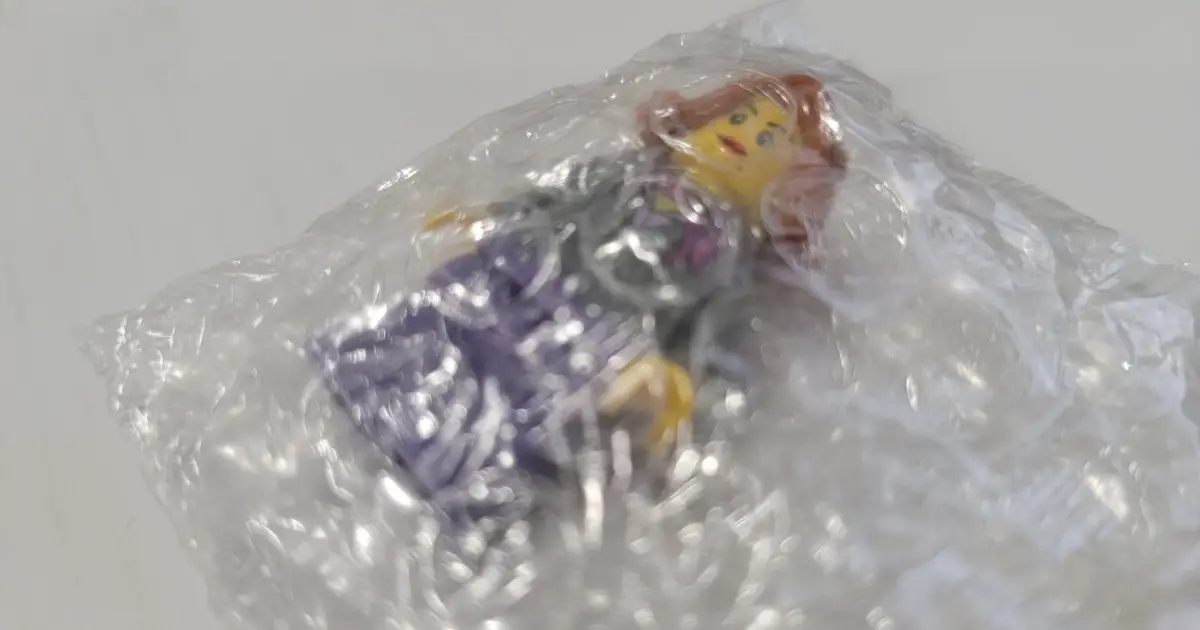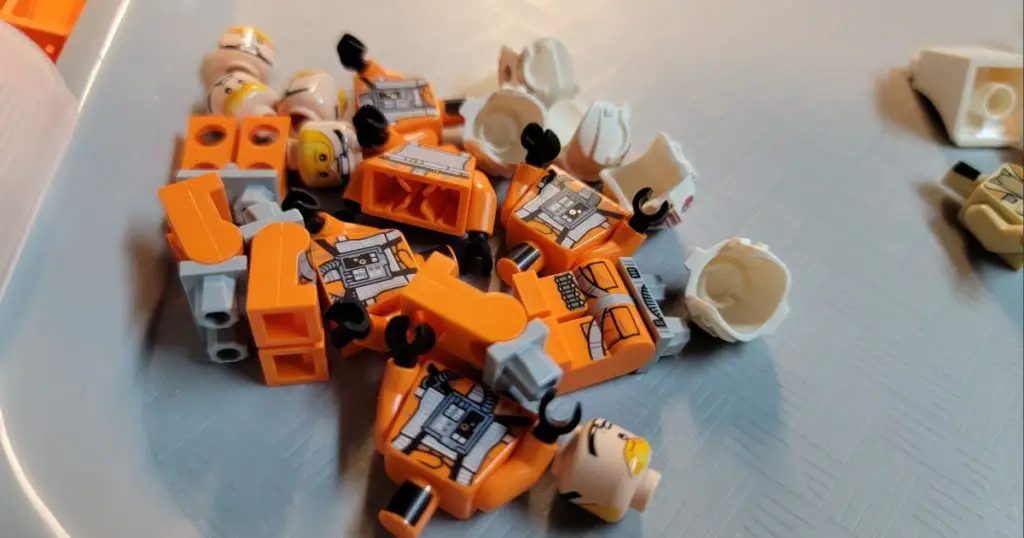
It’s no secret that LEGO enthusiasts despise cracked Minifigures, which is one of the many reasons why, in order for the yellow guys to arrive safely to their destination, it is paramount that they are securely packaged.
There are a variety of choices available to safely and securely ship LEGO minifigures. Some of the most common options are to use clear small plastic polybags to protect the minifigure from dust or scratches, and then securely package it inside a bubble mailer or a small box for shipping.
Each method has its own set of advantages and disadvantages, which I’ll go through in further depth so that hopefully your buyers won’t ever be forced to contend with the unfavorable results of a rough postal journey.
Should you put a minifigure in a bag before shipping?
Many LEGO parts sellers start by using a simple, plastic grip seal bag to place their Minifigure(s) into. This then keeps dust, dirt and anything else far away from the precious cargo. While this is a great start and the bags can be bought in bulk quantity for dirt cheap, doing this alone doesn’t provide the absolute maximum amount of protection.
Adding some bubble wrap around each grip seal bag can provide another layer to the all important cushion needed during transit. It’s a very basic addition but can make all the difference during transportation, especially if the Minifigure is being sent with very delicate and possibly flimsy accessories.
To simplify this, you could consider investing in small bubble bags. These combine the effectiveness of small clear polybags and bubble wrap together into one quick and easy approach.

Should I separate minifigure parts before shipping?
That is the question. The answer is ultimately very much left to the seller’s discretion. Some sellers will only ever send a Minifigure deconstructed because they strongly believe this lowers the chance of it getting damaged during transit. It can also in some specific cases reduce the size of the package and therefore sometimes the cost, which is of course, always welcome.
Other people, myself included, will send them pre built. I personally opt to send them this way as I feel it greatly reduces the chance of any pieces getting scratches on them if they’re sent as one solid unit compared to multiple loose pieces. This is important to me considering the many intricate details and prints on a LEGO Minifigure that I wouldn’t want to get worn down as a result of contact with other elements.
This is also why I choose to pack any accessories into a separate grip seal bag. As part of my BrickLink store, I currently send any Minifigures pre-built and thus far (touch wood) there have been no problems. However, there is no one-size-fits-all solution, and it is ultimately up to you as the seller to figure out what works best for you and your customer.
After you’ve chosen how you want to mail your Minifigures, you’ll then have to decide on the entire package. Costs, personal preferences and other factors all come into play here. Hopefully, the following list will assist you in making the best decision possible depending on your specific needs.
Should I ship minifigures in padded envelopes?
A popular rule of thumb in the LEGO part selling community is to never send Minifigures using standard envelopes, as they simply don’t provide enough adequate protection. This is where padded or bubble envelopes come in as the most popular/common approach to shipping Minifigures and there are certainly numerous advantageous reasons as to why that’s the case.
To begin, they’re lined on the inside with bubble wrap, which provides another layer of built-in protection and this makes them extremely lightweight, which helps to cut down postal costs. They take up minimal space and are incredibly easy and quick to pack things into which is a notable advantage if packing multiple items a day.
They are also available for purchase in most stores, including Walmart, and can be bought in large packs at a surprisingly affordable price point. When these costs are broken down, this usually equates to only a few cents per envelope which can have an extremely positive effect on profitability.
There are several sizes to pick from, all of which can assist in keeping the Minifigure(s) from moving around too much. On the other hand, some of the cons to this option include that they remain susceptible to crushing as despite their durable material, they ultimately do not have a robust exterior. This also means they can be easily torn or punctured during the postal process. Overall, most sellers choose to simply ship Minifigures within their grip seal bags inside bubble mailers as they continue to make for an extremely affordable and effective shipping material.

Should I ship minifigures in a box?
Personally, this is my favorite method for shipping minifigures, especially for the more expensive figures I sell. Although it’s the more costly and time consuming option, I feel it provides the best defense during the postal journey. Small boxes can be purchased in bulk as flat packs, helping to reduce the space needed to store them. They will need to be constructed, which is a simple but time consuming task, but then you will be left with a sturdy cardboard box.
I like to tape the top of the grip seal bags down to the floor of the box to reduce any movement and therefore possible scratches. It’s a particularly useful option when sending multiple figures at a time which is becoming a very frequent occurrence.
Bubble wrap can be included as yet another addition or even scrunched up newspaper on top, resulting in an overall extremely well padded and robust package. They’re reusable and recyclable, making for a very environmentally friendly choice and just like bubble mailers, are available in an assortment of different sizes.
Final Thoughts
In conclusion, when shipping LEGO Minifigures, it’s clear that the more protected they are, the lower the risk of any damage. In some cases, both options are interchangeable, while in others, one will have a distinct edge over the other.
I am personally an advocate of both, as in my opinion, any method is suitable provided the Minifigure has some type of padding surrounding it. Taking the time to thoughtfully consider which method will work best for you could save both you and your buyer lots in the long run so whether it’s your first or hundredth time shipping one, its significance should not be underestimated. After all, no one likes a cracked LEGO Minifigure or breaking the bank!
